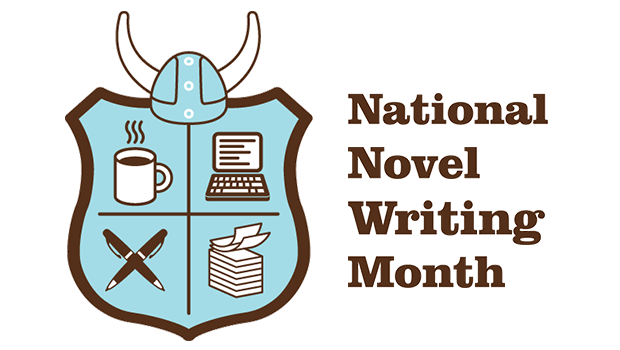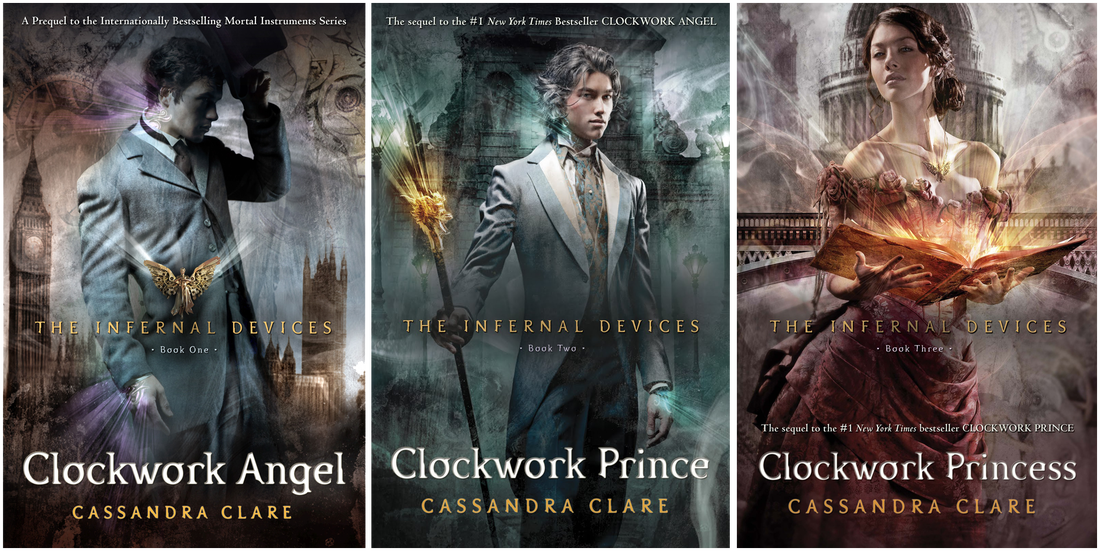 “I have this idea… What do you think?” I’ve likely had this conversation a hundred times now, at my local cafes or over Facebook, and always around October. They start around this time of year, well before November. People begin prepping Pinterest boards and stocking up on caffeine. Their social media fills with writing advice, cute blurbs tagged under “#nanowrimo2016”, vague posts about their big project. National Novel Writing Month, otherwise known as NaNoWriMo. The web writing sensation that begins on November 1st, and always comes with the intent to "get people writing." Your goal with NaNoWriMo is simple: reach 50,000 words before the end of the month. For those interested in the numbers, that's around 1,500 words a day, every day, for 30 days. Some amazing novels have actually come out of the NaNoWriMo scene: Fangirl by Rainbow Rowell and The Night Circus by Erin Morganstern were both penned in 30 November days, YA author Marissa Meyer has used the month to start novels and novellas for her Lunar Chronicles series. Hundreds of great stories have made it to market, indie or otherwise, with the help of this challenge. I love all of these books so much. I still dislike NaNoWriMo. I really dislike NaNoWriMo. I dislike NaNo in the way American retail workers dislike Christmas. For a while, I couldn’t figure out what exactly it was that irked me about the writing challenge, since I had actually done it once or twice. Not in November, though: I had been in the middle of two different novels, in the middle of two different summers. I hit a point with every project where the momentum picks up the right way and I fly with the book, clipping through 1, 500-2,000 words a day. Each time is a delightful, restless, tea-fueled journey where I would write until dawn and exist almost solely on creative energy. Surely something like NaNoWriMo would be up my alley, given my own habits? But I’ve never joined in on NaNoWriMo or planned a new project around it, mostly because of the things I see NaNoWriMo evolve into, and some of the bad habits I see it create for fledgling authors. I’ve dissected some of these on my personal blog, but I think it’s time we dig into the issue of NaNoWriMo with a little more depth. So, back to the "I have an idea" part of NaNo. Because ideas are great: ideas are the seeds of good writing. Ideas are not books though, and it’s often difficult to gauge a project’s worth of time based on a few rough character descriptions and a summary you have pulled from an online prompt. Not dogging either (since I use them both, too), but these things do not a book make. These things can lead to a draft though, if you can sit down and write it. I find the “ass-in-chair-and-fingers-to-keys” part is where a lot of people trip up because they learn very quickly that writing 1,500 words a day isn’t easy as it looks, and it rarely looks that easy to begin with. I know authors that can churn out 2,000 words every day that they write: I know authors who put down 200 words once and awhile. Writing is as personal in pace as it is in style, so the techniques that work for some may not work for all. 1,500 words a day is a skill you learn with time, and not a needed skill for finishing a novel. “Writing books is easy. It’s only 50,000 words and I have the time.” To which I always sigh. These words always undercut two big parts about the novel. 1. Writing books is the most artistic form of torturing yourself over imaginary people and situations. There are easier ways to entertain yourself, I'll be honest with you. 2. Most books aren’t 50,000 words. We can talk about The Great Gatsby and minimal novel length all we want, but modern novels, especially in fantasy and science fiction, tend to go over the 100,000 word mark and well beyond it. Also, novels do not end after you put “The End” on your first draft. Editing can (and will) take up time. One of the biggest issues I take with the NaNo mindset is that it’s used as a springboard to “get people writing” without giving people the proper disclaimer that writing doesn’t end or begin with writing itself. Between the planning, drafting, editing, and beta-reading, it’s taken near three years to finish my first novel and draft a second. A month of work stops being a meaningful thing when a project begins to span over years. That doesn’t discount the amazing free-fall of one month, but most writing projects expand well beyond that point, and I’ve watched so many new writers miss that. “I don’t need to make a plan though. I can wing it.” To which I will tell you no, no you can’t. Some of us can fly by the seat of our pants, but but most of us aren’t organized enough to finish a draft, much less in a month. This is the very mindset that fuels the essays written the night before their deadline, or the millions of half-baked romance e-novellas on Kindle: minimal effort for the same expected payoff. Prep and planning and time can mean the difference between dropping a draft at 5,000 words and pushing over 150,000 words (as much of a pain as the latter is to edit- better to have more than less). When we talk about these successful authors like Rowell or Meyer, who use NaNo to complete drafts, we should also recall that Rowell and Meyer are authors with previous experience. Authors who had several novels under their belt and a grasp of their style/voice. It almost sounds discouraging to use their works as banners for a project that’s targeted at fresh-faced writers. It sells and simplifies a process so much bigger than 50,000 words and a few nightly writing binges. A process that is rarely ever as rewarding or glamorous as the Rowlings and Martins of the world make it out to be. Most all of us can create, but being an actual author is a very different skill. So, to you all out there, as prepare your outlines, make character sheets, and finalize those writing playlists, you have my best regards for your November drafts. Remember though, that all books are much bigger than NaNoWriMo. If writing novels were as simple as 30 days of work, it would be a much less demanding, selfish, and beautiful act.
0 Comments
 It’s a fine time to be a writer, isn’t it? With the changing tides of the 21st century and the flexibility of self-publishing, the average writer is free to publish and share more diverse fiction with the rest of the world. Multi-cultural and racially diverse main characters are a slow- but sure norm. LGBT representation has become recurrent and important part of the media. The possibilities are an endless cornucopia for the growing number of open-minded readers and viewers. And still, some old tropes have failed to die to the wake of change. A very popular pair, in fact, still root up in the corners of fiction today: Strong Female Characters© and Sensitive Male Characters©. And I do not mean actual characters who fall under the category of having these traits, I am referring to characters who become these traits. Characters who are defined by their strengths or weaknesses in personality, like fighter stats in a video game manual. In the name of breaking gender expectations, these two will often appear to give a story a fresh approach to the male or female perspective. But is this reversal of roles truly commentary, or just a lazier attempt to avoid sexism? The Strong Female Character© is a frequent flier of Young Adult fiction and its close cousin, Paranormal Romance. She is often characterized by her plainness, but also that she is “not like other girls.” She will hold her own in every fight she gets in. She will be well versed in some form of combat or magic, but still clumsy and “relatable.” Occasionally, this character will still have to deal with a love triangle or troublesome, brooding boyfriend, but her woes will (usually) stay focused on saving the world from the ultimate evils. The Sensitive Male Character© is an equally familiar player of Young Adult fiction, and reoccurring in Romance novels. Not always the lead, but forever a prime cast member, he will be more “gentle than other men.” He will have complex emotions and the hobbies to match, such as poetry, knitting, and expressing his constant inner monologue to the unwitting audience. He will have a dark, tragic past and darker long eyelashes, which shadow over his cheeks as he cries in open abandon in front of an empathetic love interest. The problem with these characters is not the characters themselves, but the lack of character they often present. The banner of progressive writing is used to defend these types, citing that the help bring us away from the more cliché male and female roles that sometimes overtake the majority of fiction. Indeed, we’ve earned every reason to create more diversity than the strapping hero and swooning damsel, but just like these old characters, Strong Females and Sensitive Males fail to be the thing characters most deserve being: people. My favorite (or least favorite, if you like) examples of these types are from books, for the life of me, I tried to enjoy. Tessa Gray of The Infernal Devices by Cassandra Clare has all the makings of an interesting character, her strength tempered by Victorian age manners and her troubling magical ability forced into her life by the story’s antagonists. During the first novel of the trilogy, Tessa’s quiet struggle with her new magic and the search for her missing brother set the building blocks for an incredibly strong, clever, and complex heroine. This potential is then scraped in the second and third book, where her ability and character development take the back-burner for the story’s love triangle. She is forever described as ‘strong-willed’ and ‘clever’ by the main cast, but her character becomes inconsistently powerful, reduced to a few fight scenes, melodrama, and the unearthing of her backstory. She actually spends a third of the last book captured by the main villain, only to unleash the power she had “all along” on him in the last few chapters- after her love interest has shown up. The resulting finale feels lackluster, and Tessa has changed very little aside from what physical (or magical) strength she presents. A lesser known book, Mary Lindsay’s Ashes on The Waves, is the home of Liam MacGregor, the troubled lead of a Edgar Allen Poe-based fantasy story, where murder and romance overtake the peace of a secluded Irish village. I could write another blog on the problems surrounding this book (which included a frequent, jarring change between first and third person in the middle of chapters), but let’s focus on Liam for now. Secluded by the superstitious villagers and deformed from birth, our main character spends the majority of the book doing one of three things: lamenting over his isolation, pining over his horrible love interest, or reading editions of Keats and Wordsworth. What could be sympathetic and likable quickly turns to character decay as we are reminded again and again just how sensitive Liam is. By the end of the novel, we know very little else about Liam other than his sensitivity. The problem with both of these characters, as I’ve realized, is the idea at the core of their traits: that sensitivity is feminine and strength is masculine. And here is where we fail over and over as writers, when we choose to write characters that detract from the norm. Ignoring the presence of patriarchy and its effects on a real world setting can leave a story discombobulated. Sensitivity and strength are not mutually inclusive, and to call them forth with the stereotypical traits of the other gender does not actually defeat the gender stereotype. You just enforce it tenfold. I have never read a better bit of advice than “characters are people first.” Just like people, they rarely fall to one side of traits or the other, and exemplify strength in all sorts of colorful ways. We are more complex than the archetypes we create; we are creatures full of dimensions and shadows that deserve the attention of writing. Diversity is often more than reversing the expected traits of a particular gender/race/nationality, but challenging oneself to dig deeper, finding the person a character is outside of their labels and creeds. Only then do we truly stopping breaking stereotypes badly.  (originally published here). This week, I return to editing. I unpack my pens, take out my notebooks and open my word processor to the same opening chapter, visiting familiar first lines I have visited hundreds of times before—begrudging passes and red ink at 3:00 a.m. with only caffeine to fuel me. It's nothing new for me. My world seems to always come back to editing at some point. In 2013, I started and finished a journey in writing my first novel. Quite coincidentally, I began attending college around the same time. A full plate of writing and essays since entering school and an even bigger project when I realized that my lovely first draft of a novel was not finished until I had edited it. For most students, the idea of editing the average essay is a painful thought. My novel had landed somewhere around 155,000 words. It fills me with dread just thinking about it. After three years of working, college and writing in conjunction, I've learned a thing or two about the editing process. That which has brought out the best in my academic writing has, in turn, brought my novel where it is today. The struggle is ever-present and complicated, but these are a few of the best pointers I've found for editing one's writing, both creative and professional. Distance is key. Contrary to the popular trend of the all-nighter, most of us need more time to edit than 24 hours (not to say I haven't been there, but hear me out). Any time we write a first draft, we are only experiencing what Terry Pratchett called “telling ourselves the story.” Whether it's a 2,000 word essay or a 50,000 word novel, early drafts tend to spill out in messy, unpolished concepts. Revision and editing are not new applications to remedy the chaos of a first draft, but distance is often very important in churning out quality products. I usually give 48 hours to return to papers for classes, and a minimum of two weeks before returning to any creative project. The less familiar you are with your work, the easier it will be to edit and find your own errors in the long run. Kill your darlings. The art of writing is paired, hand in hand, with the art of deleting. Another quote about writing often coined and used is the famous “kill your darlings," meaning we must part with aspects of our projects, even if we love them. Once you're put some distance between you and the draft, you often find yourself with a slew of content you no longer need. After multiple edits, actually, a work can begin to reshape or even change altogether. Some of the most difficult points in the writing process are where you have a piece that you absolutely, completely and totally adore, and it no longer fits with the rest of the work. I tend to keep a file for deleted scenes or sentences I'm fond of. They always find their way back into your writing, one way or another. Sacrificing words from a work will often strengthen it, in the long run. The more eyes, the better. When all editing is said and done and you have properly cleaned up your work, it is in your best interest to hand off your writing to a few trusted friends and well-read eyes. For some, the idea of opening an unfinished work to criticism causes more anxiety than finishing the work itself. Nevertheless, there is something great about the presence of a reader in a project. My beta-readers, past and present, have been some of the most valuable voices in changes and last edits. They can catch errors, continuity problems and tone changes that you might have otherwise missed. It can be a frightening part of the editing process, but worth the bravery it can take. What are your favorite pieces of editing advice, or tricks that get you through a drafts? Do your processes differ with your creative and academic work? |
About MeCaitlin Jones is an author, film editor, and lover of all things Victorian and fantastic. Please check in for information on her upcoming series. Archives
August 2020
|
 RSS Feed
RSS Feed
